Economy

BLS: Net Job Creation Through January 2019
Written by Peter Wright
February 8, 2019
Employment gains were unexpectedly strong in January.
The January employment release from the Bureau of Labor Statistics (BLS) included huge historical revisions. We re-entered our data back to January 2010, but found that revisions extended even further back in time.
Net job creation in January as reported by the BLS on Friday was 303,000, which was far in excess of economists’ expectations. December was revised down by 90,000 and November up by 20,000. Rising employment and wages are the main contributor to GDP growth because personal consumption accounts for almost 70 percent of GDP. Steel consumption is related to GDP; therefore, this is one of the indicators that helps us understand the reality of the steel market.
Figure 1 shows the three-month moving average (3MMA) of the number of jobs created monthly since 2000 as the brown bars and the total number employed as the black line.
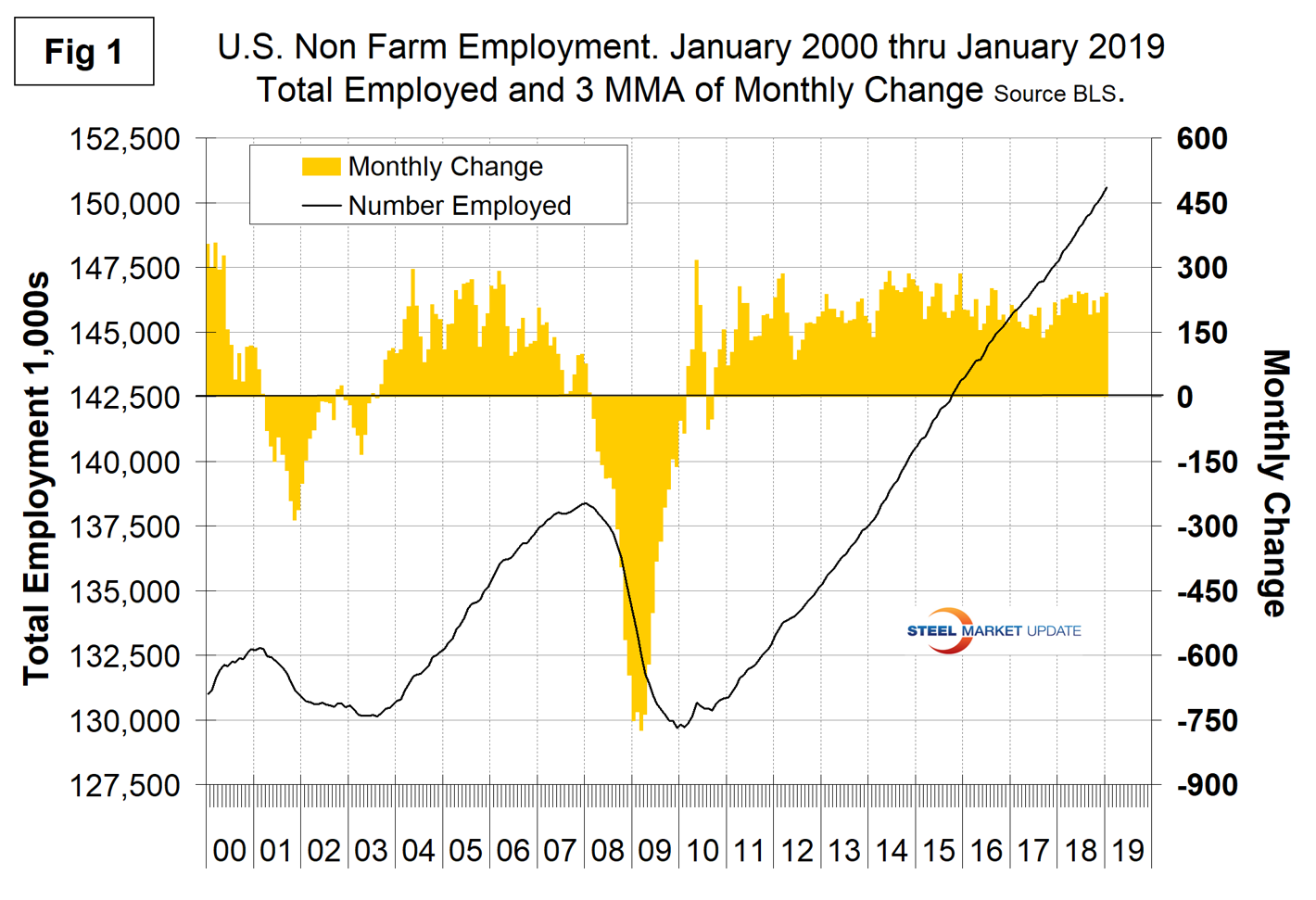
We prefer to use three-month moving averages in our analyses to reduce short-term variability, but in averaging employment statistics in this way we obscure what we think is inferior data.
Figure 1a shows the raw monthly data since January last year and the extreme variability that has been reported. The average monthly job creation in the last 13 months has been 229,000.
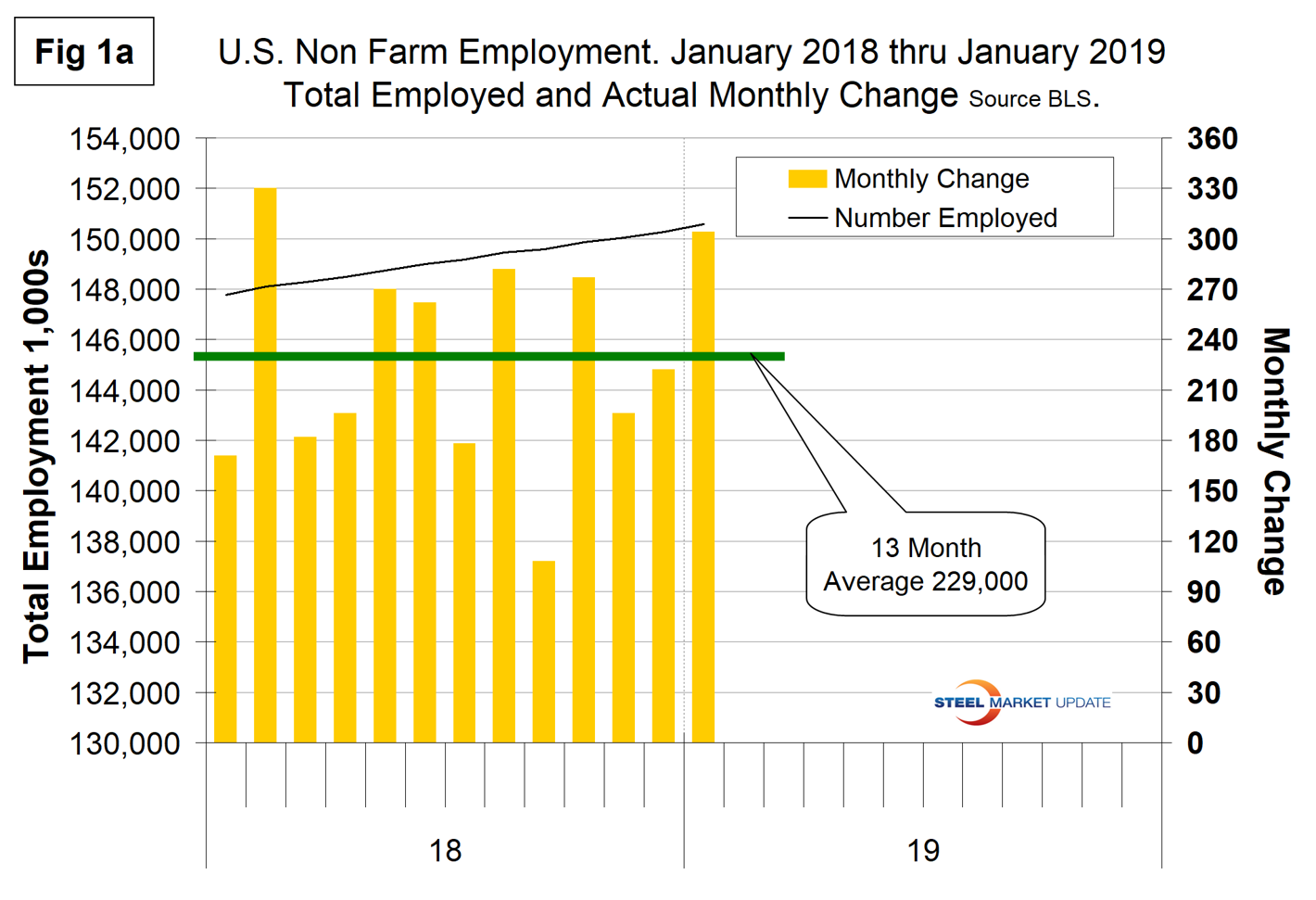
The employment data has been seasonally adjusted. We have developed Figure 2 to examine if any seasonality is left in the data after adjustment. In the eight years since and including 2011, the average month-on-month change from December to January has been positive 9 percent. This year the change was positive 37 percent; therefore, we wouldn’t be surprised if in next month’s data release January is revised down. We think it’s significant to look at the results this way because some reports in the press will get over excited or depressed by a monthly result without putting it in context.
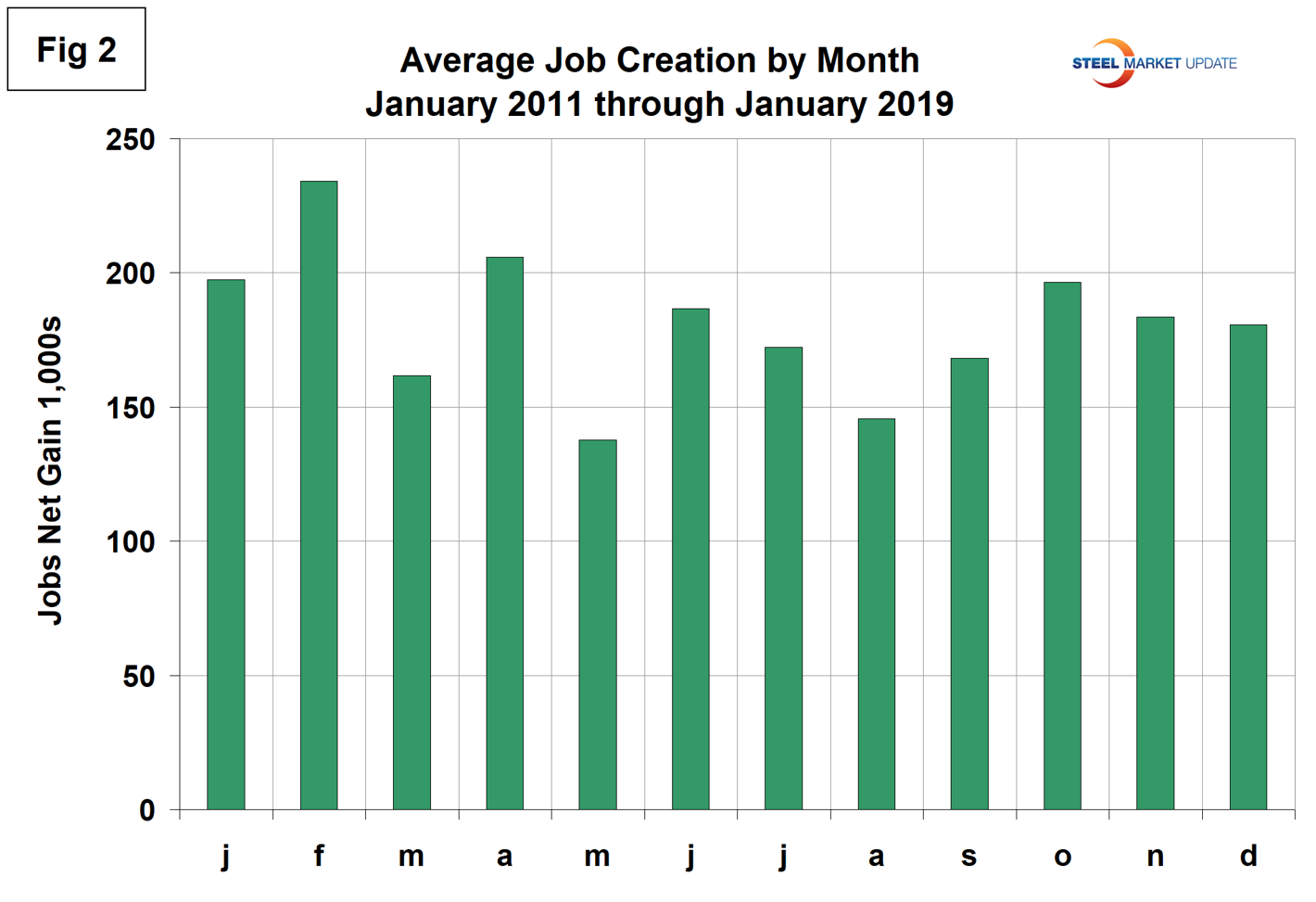
In order to get another look at the degree of change, we have developed Figure 3. This shows the same total employment line as Figure 1, but includes the year-over-year growth on a percentage basis and shows more clearly the steady improvement that occurred throughout 2018.
Last November was the first month ever for total nonfarm payrolls to exceed 150 million, and in January 2019 nonfarm was 12.2 million more than the pre-recession high of February 2008.
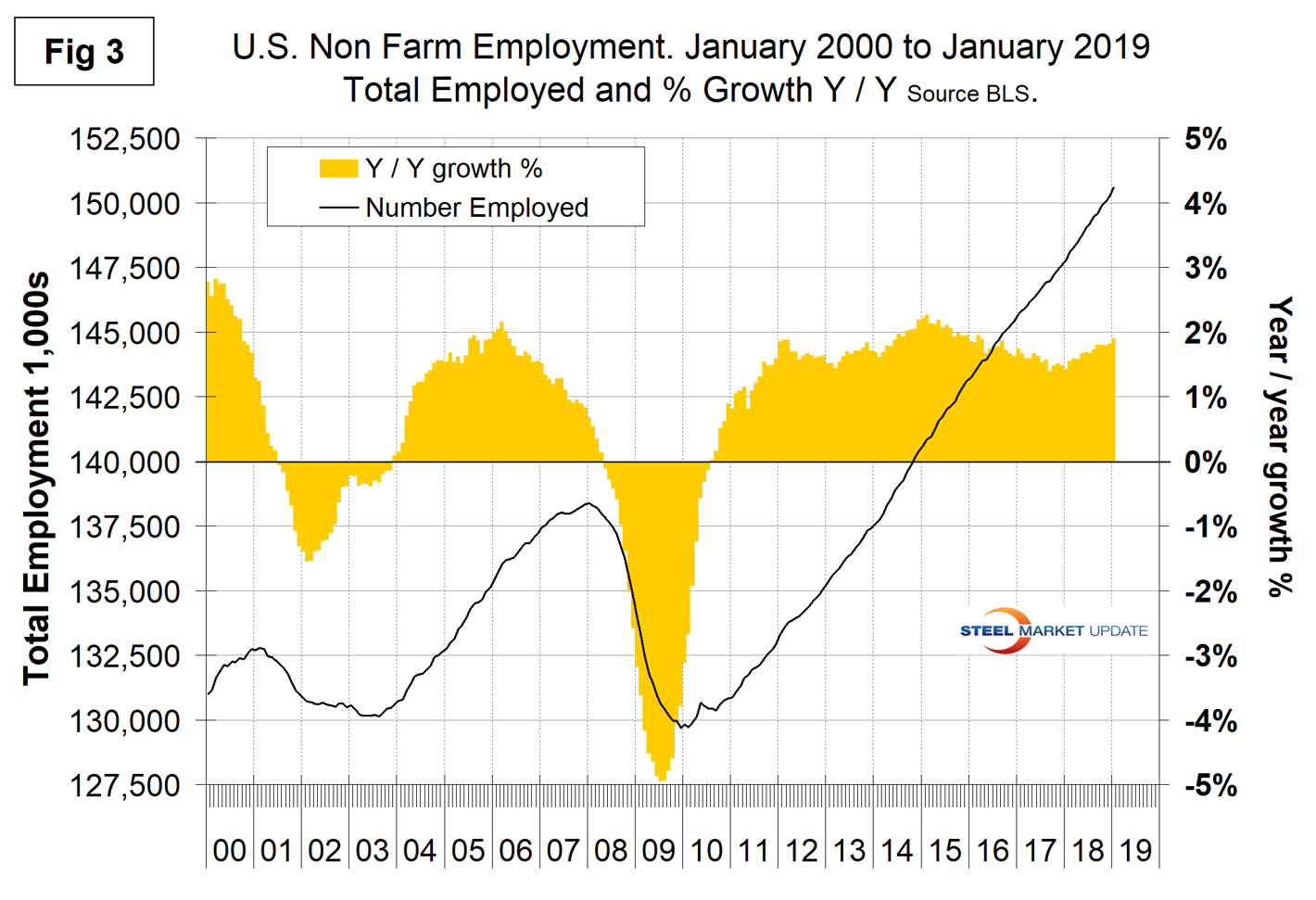
According to the latest BLS data, the average workweek for all employees on private nonfarm payrolls was unchanged at 34.5 hours in January. In manufacturing, both the workweek and overtime decreased by 0.1 hour to 40.8 hours and 3.5 hours, respectively. The average workweek for production and nonsupervisory employees on private nonfarm payrolls held at 33.7 hours. Average hourly earnings of all employees on private nonfarm payrolls rose by 3 cents in January to $27.56, following a 10 cent increase in December. Over the past 12 months, average hourly earnings have grown by 3.2 percent. Regarding the shutdown, the BLS commissioner had this to say: “Our evaluation of the establishment survey data indicates that there were no discernible impacts of the partial federal government shutdown on the January estimates of employment, hours, or earnings. Federal government employment was essentially unchanged over the month (+1,000). Federal employees on furlough during the shutdown were considered employed in the establishment survey because they worked or received pay (or will receive pay) for the survey’s reference period, which is the pay period that includes the 12th of the month. It is likely that some private industries were affected by the shutdown; however, we are not able to quantify the impacts.”
The official unemployment rate, U3, reported in the BLS Household survey (see explanation below) increased from 3.7 percent in November to 3.9 percent in December and 4.0 percent in January. This is not a very representative number. The more comprehensive U6 unemployment rate declined from 9.4 percent in January 2017 to 7.4 percent in August before increasing to 8.1 percent in January (Figure 4). The difference between these two measures in January was 4.1 percent. U6 includes individuals working part time who desire full-time work and those who want to work but are so discouraged they have stopped looking.
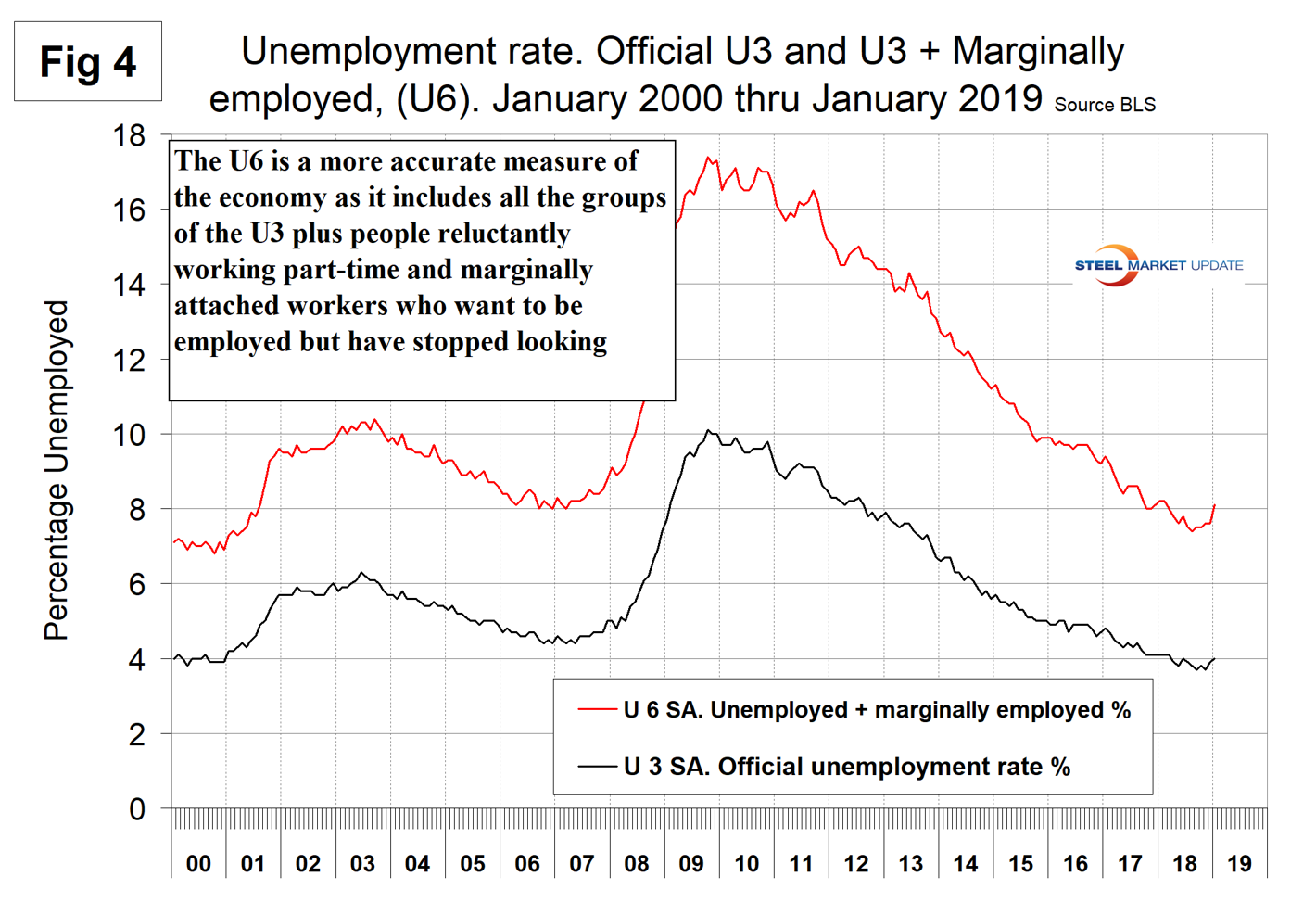
Moody’s Analytics summarized as follows: “The remarkably enduring labor market expansion, which just completed an unprecedented 100 consecutive months, is paying dividends for workers, not only in terms of job opportunities but also in steadily improving wage growth. In January, year-over-year wage growth in private industries reached 3.2%, a cyclical high. The enduring labor market expansion suggests that the well of available workers has not yet run dry. The key prime-age participation rate improved to 82.6% in January and still has some ground to make up from the decline that occurred during and after the recession. Moody’s Analytics expects the labor market expansion to persist through 2019, though monthly payroll gains will moderate to 165,000 from an average of 223,000 in 2018. The unemployment rate will end the year at 3.3%.”
The labor force participation rate is calculated by dividing the number of people actively participating in the labor force by the total number of people eligible to participate. This measure was 63.2 percent in January, up from 62.9 percent in November; the 3MMA at 63.1 percent hasn’t changed much in over two years. Another gauge is the number employed as a percentage of the population, which we think is more definitive. In January, the employment-to-population ratio was 60.7 percent, the highest number since December 2008. The employment-to-population ratio has made progress for the last four years, but the labor force participation rate has been stalled for two years. Figure 5 shows both measures on one graph.

In the 37 months since and including January 2016, there has been an increase of 7,097,000 full-time and a decrease of 626,000 part-time jobs. Figure 6 shows the rolling 12-month change in both part-time and full-time employment. This data comes from the Household survey and part-time is defined as less than 35 hours per week. Because the full-time/part-time data comes from the Household survey and the headline job creation number comes from the Establishment survey, the two cannot be compared in any given month. To overcome the volatility in the part-time numbers, we look at a rolling 12 months for the full-time and part-time employment picture shown in Figure 6.
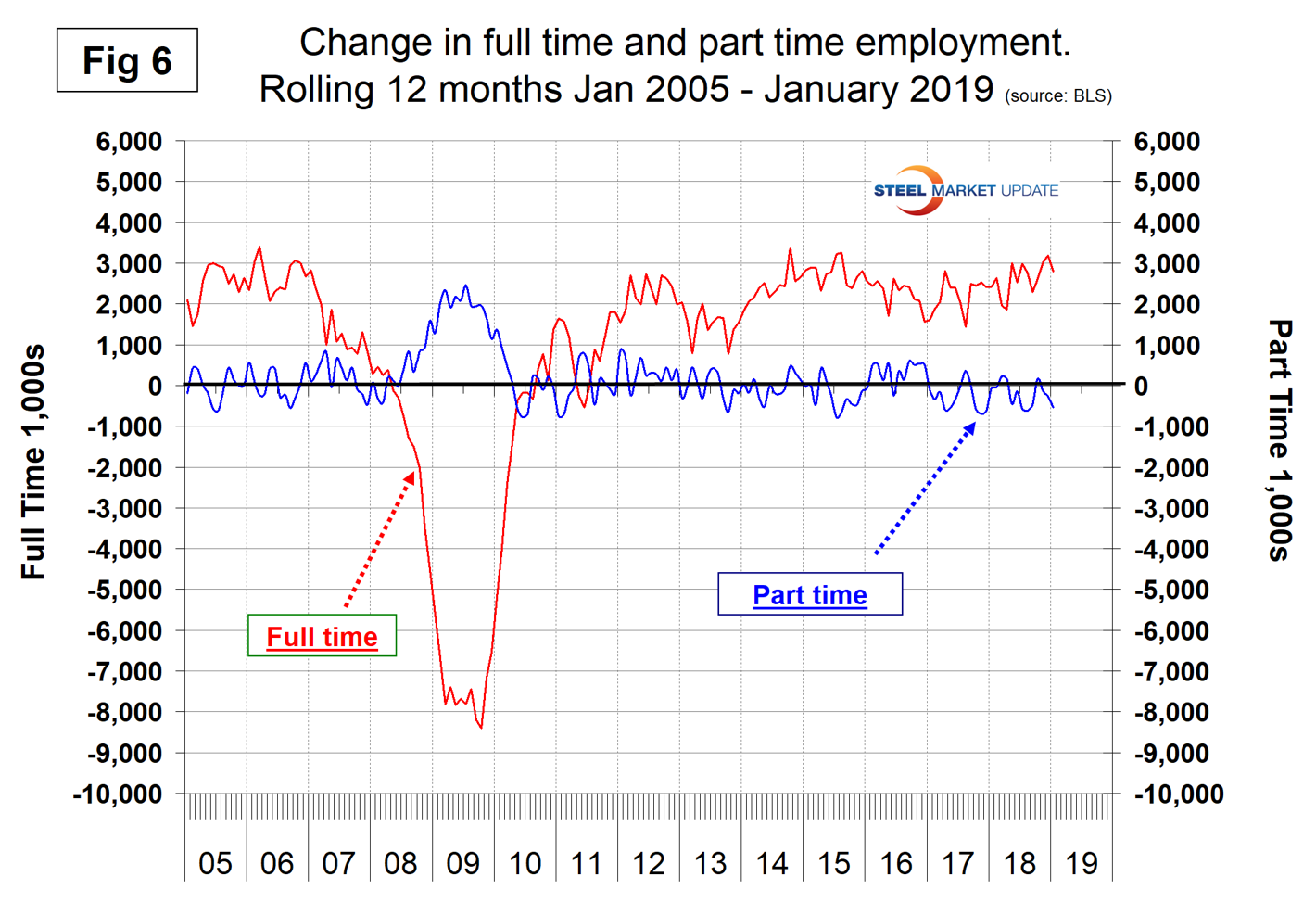
The job openings report known as JOLTS is reported on about the 10th of the month by the Federal Reserve and is over a month in arrears. Figure 7 shows the history of unfilled jobs through November when openings stood at 6,888,000. This was down from the all-time high of 7,293,000 in August. There are now more job openings than there are people counted as unemployed.
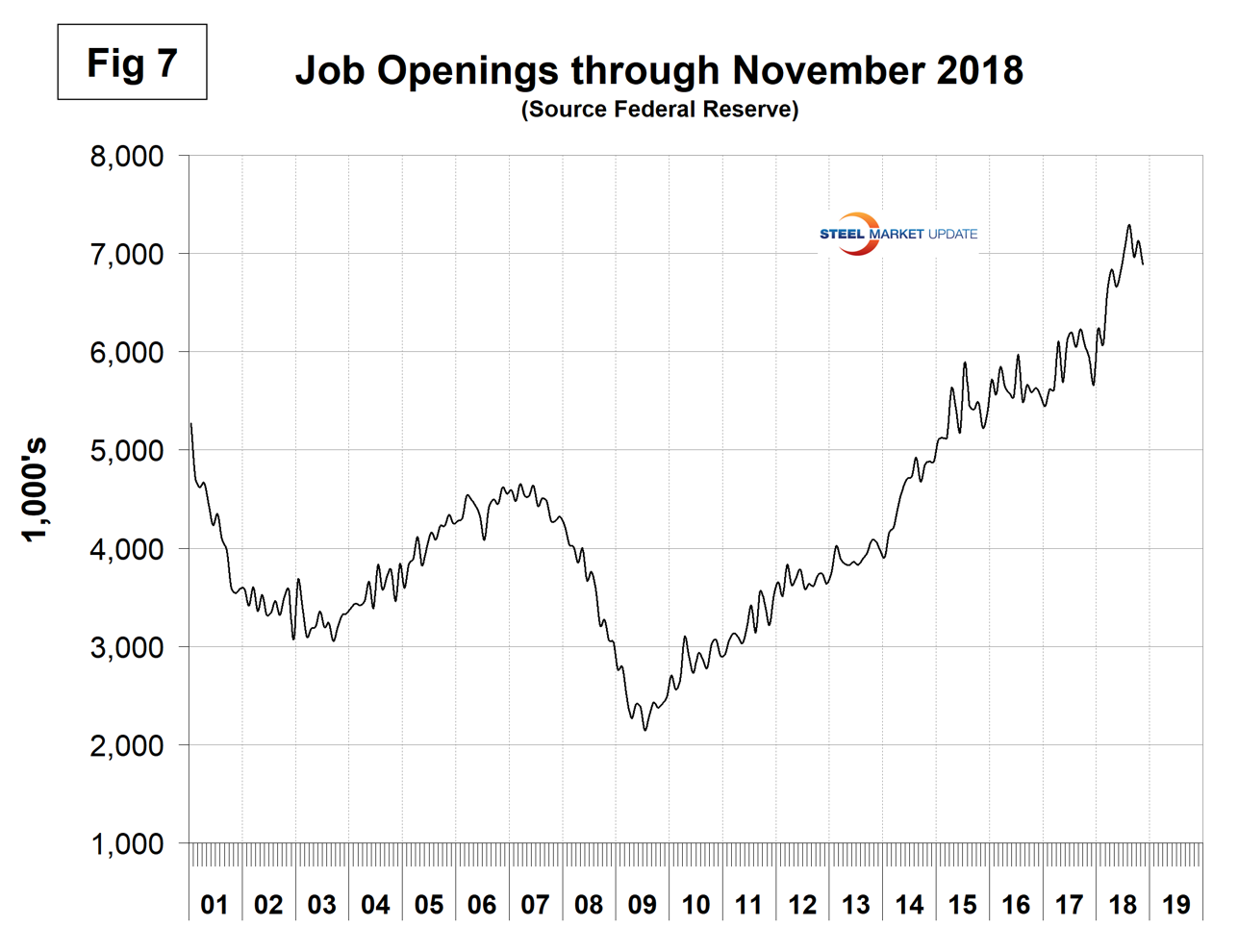
Initial claims for unemployment insurance, reported weekly by the Department of Labor, shot up by 53,000 in the week ending Jan. 26 to 253,000 with a four-week moving average of 220,250. New claims in September were at the lowest level since 1969. The U.S. is enjoying the longest streak since 1973 of initial claims below 300,000 (Figure 8).
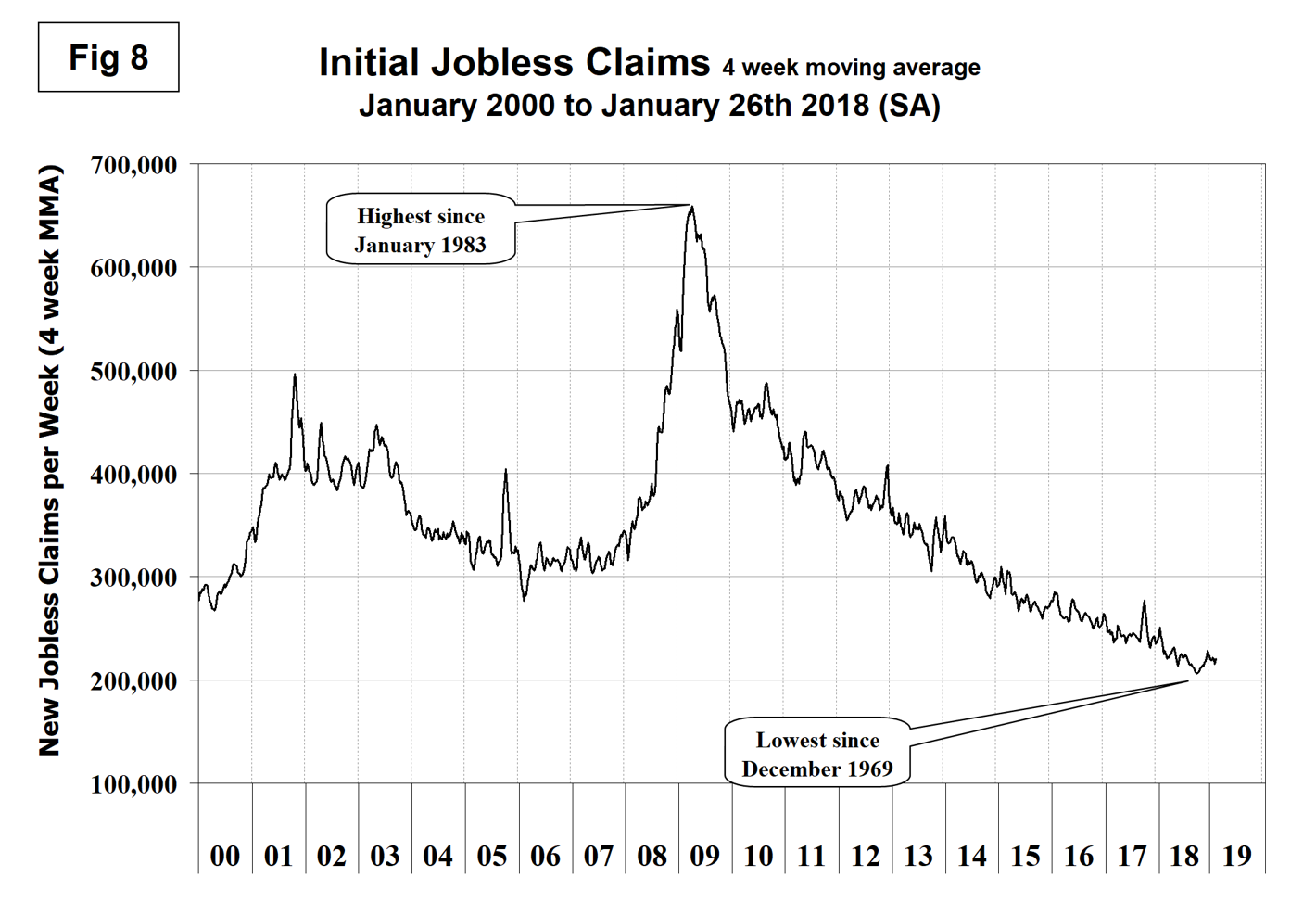
SMU Comment: This was an unexpectedly strong report on the back of data revisions going back for over 18 years. It’s a strong start to 2019, which bodes well for first-quarter GDP and steel consumption.
Explanation: On the first Friday of each month, the Bureau of Labor Statistics releases the employment data for the previous month. Data is available at www.bls.gov. The BLS reports on the results of two surveys. The Establishment survey reports the actual number employed by industry. The Household survey reports on the unemployment rate, participation rate, earnings, average workweek, the breakout into full-time and part-time workers and lots more details describing the age breakdown of the unemployed, reasons for and duration of unemployment. At Steel Market Update, we track the job creation numbers by many different categories. The BLS database is a reality check for other economic data streams such as manufacturing and construction. We include the net job creation figures for those two sectors in our “Key Indicators” report. It is easy to drill down into the BLS database to obtain employment data for many subsectors of the economy. For example, among hundreds of sub-indexes are truck transportation, auto production and primary metals production. The important point about all these data streams is the direction in which they are headed. Whenever possible, we try to track three separate data sources for a given steel-related sector of the economy. We believe this gives a reasonable picture of market direction. The BLS data is one of the most important sources of fine-grained economic data that we use in our analyses. The states also collect their own employment numbers independently of the BLS. The compiled state data compares well with the federal data. Every three months, SMU examines the state data and provides a regional report, which indicates strength or weakness on a geographic basis. Reports by individual state can be produced on request.

Peter Wright
Read more from Peter WrightLatest in Economy

New York state manufacturing index drops again in April
Firms were pessimistic, with the future general business conditions index falling to its second lowest reading in the more than 20-year history of the survey

Construction adds 13,000 jobs in March
The construction sector added 13,000 jobs, seasonally adjusted, in March, but tariffs could undermine the industry.

Supply chains, end-users brace for impact from tariffs
Supply chains are working through what the tariffs mean for them

ISM: Manufacturing expansion loses steam after two months of growth
US manufacturing activity slowed in March after two straight months of expansion, according to supply executives contributing to the Institute for Supply Management (ISM)’s latest report.

Chicago Business Barometer rose to 16-month high in March
The Chicago Business Barometer increased for the third-consecutive month in March. Despite this, it still reflects contracting business conditions, as it has since December 2023.
